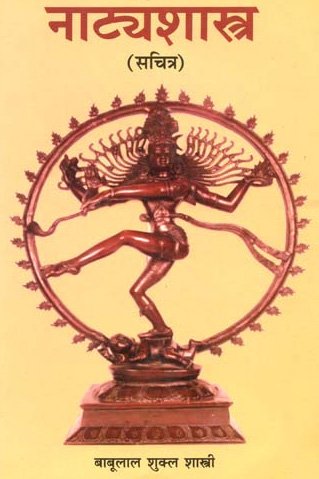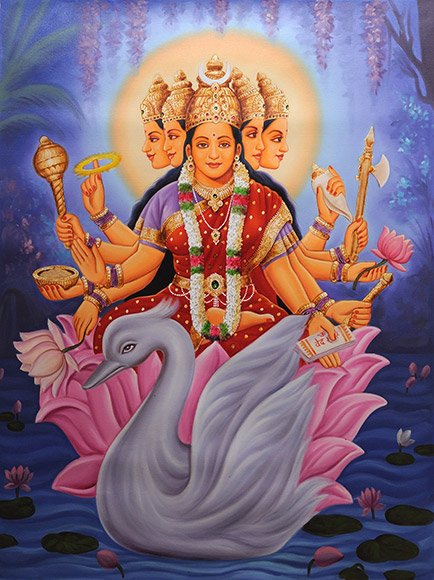Meghamala, Megha-mala, Meghamālā, Meghamāla: 17 definitions
Introduction:
Meghamala means something in Buddhism, Pali, Hinduism, Sanskrit, Jainism, Prakrit, Marathi. If you want to know the exact meaning, history, etymology or English translation of this term then check out the descriptions on this page. Add your comment or reference to a book if you want to contribute to this summary article.
In Hinduism
Purana and Itihasa (epic history)
Source: archive.org: Puranic EncyclopediaMeghamālā (मेघमाला).—A female follower of Subrahmaṇya. (Śloka 30, Chapter 46, Śalya Parva).
Source: Cologne Digital Sanskrit Dictionaries: The Purana IndexMeghamālā (मेघमाला).—Mt. a boundary hill in Plakṣadvīpa.*
- * Bhāgavata-purāṇa V. 20. 4.
Meghamālā (मेघमाला) refers to the name of a Lady mentioned in the Mahābhārata (cf. IX.45.28). Note: The Mahābhārata (mentioning Meghamālā) is a Sanskrit epic poem consisting of 100,000 ślokas (metrical verses) and is over 2000 years old.

The Purana (पुराण, purāṇas) refers to Sanskrit literature preserving ancient India’s vast cultural history, including historical legends, religious ceremonies, various arts and sciences. The eighteen mahapuranas total over 400,000 shlokas (metrical couplets) and date to at least several centuries BCE.
Natyashastra (theatrics and dramaturgy)
Source: Wisdom Library: Nāṭya-śāstraMeghamālā (मेघमाला) refers to a type of syllabic metre (vṛtta), according to the Nāṭyaśāstra chapter 16. In this metre, the first six, the eighth, the eleventh, the fourteenth the seventeenth, the twentieth and the twenty-third syllables of a foot (pāda) are light (laghu), while the rest of the syllables are heavy (guru).
⏑⏑⏑¦⏑⏑⏑¦⎼⏑⎼¦⎼⏑⎼¦⎼⏑⎼¦⎼⏑⎼¦⎼⏑⎼¦⎼⏑⎼¦¦⏑⏑⏑¦⏑⏑⏑¦⎼⏑⎼¦⎼⏑⎼¦⎼⏑⎼¦⎼⏑⎼¦⎼⏑⎼¦⎼⏑⎼¦¦
⏑⏑⏑¦⏑⏑⏑¦⎼⏑⎼¦⎼⏑⎼¦⎼⏑⎼¦⎼⏑⎼¦⎼⏑⎼¦⎼⏑⎼¦¦⏑⏑⏑¦⏑⏑⏑¦⎼⏑⎼¦⎼⏑⎼¦⎼⏑⎼¦⎼⏑⎼¦⎼⏑⎼¦⎼⏑⎼¦¦
Meghamālā falls in the Saṃkṛti class of chandas (rhythm-type), which implies that verses constructed with this metre have four pādas (‘foot’ or ‘quarter-verse’) containing twenty-four syllables each.

Natyashastra (नाट्यशास्त्र, nāṭyaśāstra) refers to both the ancient Indian tradition (shastra) of performing arts, (natya—theatrics, drama, dance, music), as well as the name of a Sanskrit work dealing with these subjects. It also teaches the rules for composing Dramatic plays (nataka), construction and performance of Theater, and Poetic works (kavya).
Chandas (prosody, study of Sanskrit metres)
Source: Shodhganga: a concise history of Sanskrit Chanda literatureMeghamālā (मेघमाला) is the alternative name of a Sanskrit metre (chandas) mentioned by Hemacandra (1088-1173 C.E.) in his auto-commentary on the second chapter of the Chandonuśāsana. Meghamālā corresponds to Bhṛṅgābja-līlālaka. Hemacandra gives these alternative names for the metres by other authorities (like Bharata), even though the number of gaṇas or letters do not differ.

Chandas (छन्दस्) refers to Sanskrit prosody and represents one of the six Vedangas (auxiliary disciplines belonging to the study of the Vedas). The science of prosody (chandas-shastra) focusses on the study of the poetic meters such as the commonly known twenty-six metres mentioned by Pingalas.
In Buddhism
Theravada (major branch of Buddhism)
Source: Pali Kanon: Pali Proper NamesA robber of great fame. DA.i.89; MA.ii.688.
Theravāda is a major branch of Buddhism having the the Pali canon (tipitaka) as their canonical literature, which includes the vinaya-pitaka (monastic rules), the sutta-pitaka (Buddhist sermons) and the abhidhamma-pitaka (philosophy and psychology).
In Jainism
General definition (in Jainism)
Source: The University of Sydney: A study of the Twelve ReflectionsMeghamālā (मेघमाला) refers to a “series of clouds”, according to the 11th century Jñānārṇava, a treatise on Jain Yoga in roughly 2200 Sanskrit verses composed by Śubhacandra.—Accordingly, “Connections with pleasing sense objects, whose impressions are full of deceit like dreams, perish immediately. Families, armies, empires, decorations and wealth are asserted by the great seers as acting like a series of clouds [com.—like a series of clouds (meghamālāsadṛśāni), because of [their] inconstancy (cañcalatvāt)]”.
Synonyms: Ghanamālā.

Jainism is an Indian religion of Dharma whose doctrine revolves around harmlessness (ahimsa) towards every living being. The two major branches (Digambara and Svetambara) of Jainism stimulate self-control (or, shramana, ‘self-reliance’) and spiritual development through a path of peace for the soul to progess to the ultimate goal.
Languages of India and abroad
Marathi-English dictionary
Source: DDSA: The Molesworth Marathi and English Dictionarymēghamāḷa (मेघमाळ).—f A string of paper-cuttings &c. See raṅgamāḷa.
--- OR ---
mēghamāḷā (मेघमाळा).—f (Wreath of clouds.) The clouds. 2 The name of a book of prophetic calculations made upon the clouds. 3 The wreath of pitchers around a Persian waterwheel.
Marathi is an Indo-European language having over 70 million native speakers people in (predominantly) Maharashtra India. Marathi, like many other Indo-Aryan languages, evolved from early forms of Prakrit, which itself is a subset of Sanskrit, one of the most ancient languages of the world.
Sanskrit dictionary
Source: DDSA: The practical Sanskrit-English dictionaryMeghamālā (मेघमाला).—f. a line of clouds; प्रथमं मेघराजिः पञ्चाद् बिद्युल्लता (prathamaṃ megharājiḥ pañcād bidyullatā) V.2.
Meghamālā is a Sanskrit compound consisting of the terms megha and mālā (माला). See also (synonyms): meghapaṅkti, megharāji.
--- OR ---
Meghamāla (मेघमाल).—a. cloud-capt.
Meghamāla is a Sanskrit compound consisting of the terms megha and māla (माल). See also (synonyms): meghamālin.
Source: Cologne Digital Sanskrit Dictionaries: Shabda-Sagara Sanskrit-English DictionaryMeghamālā (मेघमाला).—f.
(-lā) A gathering or succession of clouds. E. megha a cloud, mālā a necklace or garland.
Source: Cologne Digital Sanskrit Dictionaries: Cappeller Sanskrit-English DictionaryMeghamālā (मेघमाला).—[feminine] wreath of clouds, lit. = seq.
Source: Cologne Digital Sanskrit Dictionaries: Aufrecht Catalogus Catalogorum1) Meghamālā (मेघमाला) as mentioned in Aufrecht’s Catalogus Catalogorum:—indication of coming rain, famine or plenty, etc. from the appearance of the atmosphere, attributed to Nārada. L. 2668. Report. Xxxv. Pheh. 8. Quoted in Śāntisāra.
Meghamālā has the following synonyms: Mayūracitraka, Ratnamālā.
2) Meghamālā (मेघमाला):—from Rudrayāmala. Bik. 603.
3) Meghamālā (मेघमाला):—jy. Ben. 28. Pheh. 8. Rādh. 35. Np. V, 4. H. 319 (by Garga). Vienna. 17.
—Aindrī. B. 4, 116.
—by Prajāpatidāsa. Peters. 3, 398.
—by Mahādeva. B. 4, 180.
—Raudrī. Kh. 74. Oudh. X, 10 (by Rudra). Peters. 2, 194.
—by Vāsudeva. B. 4, 180.
—by Śiva (?). K. 238. B. 4, 180.
4) Meghamālā (मेघमाला):—from the Rudrayāmala. Stein 236. Weber 2240.
5) Meghamālā (मेघमाला):—jy. on the signs of coming clouds and subsequent rain, of meteors and lightning, and the omens to be derived from their appearance. L. 4222. Peters. 4, 36. Rgb. 843. 844 (by Garga).
—attributed to Bhairava and Maheśvara. Peters. 4, 36.
—Raudrī. Io. 1681.
—by a Viṣṇubhakta. Fl. 337.
—in the form of a dialogue between Śiva and Pārvatī. Fl. 337. Rgb. 845.
6) Meghamālā (मेघमाला):—from the Rudrayāmala. Ulwar 1911.
7) Meghamālā (मेघमाला):—assigned to the Rudrayāmala. As p. 152. Cs 5, 82. L.. 1246. Peters. 6, 434.
Source: Cologne Digital Sanskrit Dictionaries: Monier-Williams Sanskrit-English Dictionary1) Meghamāla (मेघमाल):—[=megha-māla] [from megha] m. ‘cl°-capped, crowned with cl°’, Name of a mountain, [Bhāgavata-purāṇa]
2) [v.s. ...] of a Rākṣasa, [Rāmāyaṇa]
3) [v.s. ...] of a son of Kalki, [Kalki-purāṇa]
4) Meghamālā (मेघमाला):—[=megha-mālā] [from megha-māla > megha] f. a line or succession or gathering of cl°, [Mahābhārata; Kāmandakīya-nītisāra]
5) [v.s. ...] Name of a Mātṛ attending on Skanda, [Mahābhārata]
6) [v.s. ...] of sub voce works.
Source: Cologne Digital Sanskrit Dictionaries: Yates Sanskrit-English DictionaryMeghamālā (मेघमाला):—[megha-mālā] (lā) 1. f. A gathering or succession of clouds.
[Sanskrit to German]
Sanskrit, also spelled संस्कृतम् (saṃskṛtam), is an ancient language of India commonly seen as the grandmother of the Indo-European language family (even English!). Closely allied with Prakrit and Pali, Sanskrit is more exhaustive in both grammar and terms and has the most extensive collection of literature in the world, greatly surpassing its sister-languages Greek and Latin.
Nepali dictionary
Source: unoes: Nepali-English DictionaryMeghamālā (मेघमाला):—n. mass of clouds;
Nepali is the primary language of the Nepalese people counting almost 20 million native speakers. The country of Nepal is situated in the Himalaya mountain range to the north of India.
See also (Relevant definitions)
Partial matches: Megha, Maala, Mala.
Starts with: Meghamalamanjari, Meghamalanirnaya.
Ends with: Aindri meghamala, Raudri meghamala.
Full-text: Ketalikirti, Raudri meghamala, Aindri meghamala, Meghamalin, Prajapatidasa, Bhringabjalilalaka, Megha, Meghapankti, Megharaji, Raudri, Ghanamala, Shiva, Mayuracitraka, Rudrayamale, Ratnamala, Vasudeva, Rudrayamala, Rudra, Mahadeva, Rudrayamalatantra.
Relevant text
Search found 8 books and stories containing Meghamala, Megha-mala, Meghamālā, Meghamāla, Megha-mālā, Mēghamāḷa, Mēghamāḷā, Megha-māla; (plurals include: Meghamalas, malas, Meghamālās, Meghamālas, mālās, Mēghamāḷas, Mēghamāḷās, mālas). You can also click to the full overview containing English textual excerpts. Below are direct links for the most relevant articles:
Garga Samhita (English) (by Danavir Goswami)
Verse 4.19.8 < [Chapter 19 - A Thousand Names of Srī Yamunā]
List of Mahabharata people and places (by Laxman Burdak)
Rig Veda (translation and commentary) (by H. H. Wilson)
Rig Veda 1.121.7 < [Sukta 121]
The Devi Bhagavata Purana (by Swami Vijñanananda)
Mahabharata (English) (by Kisari Mohan Ganguli)
Section 46 < [Shalya Parva]
Natyashastra (English) (by Bharata-muni)